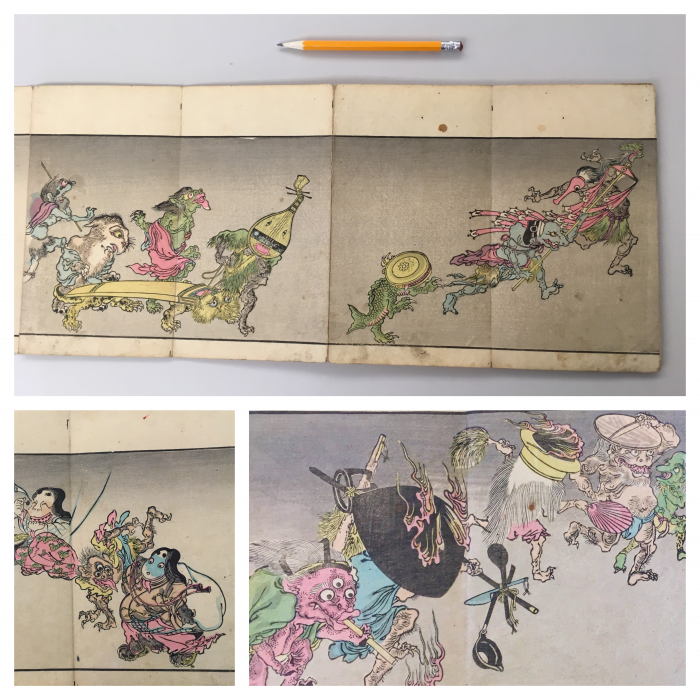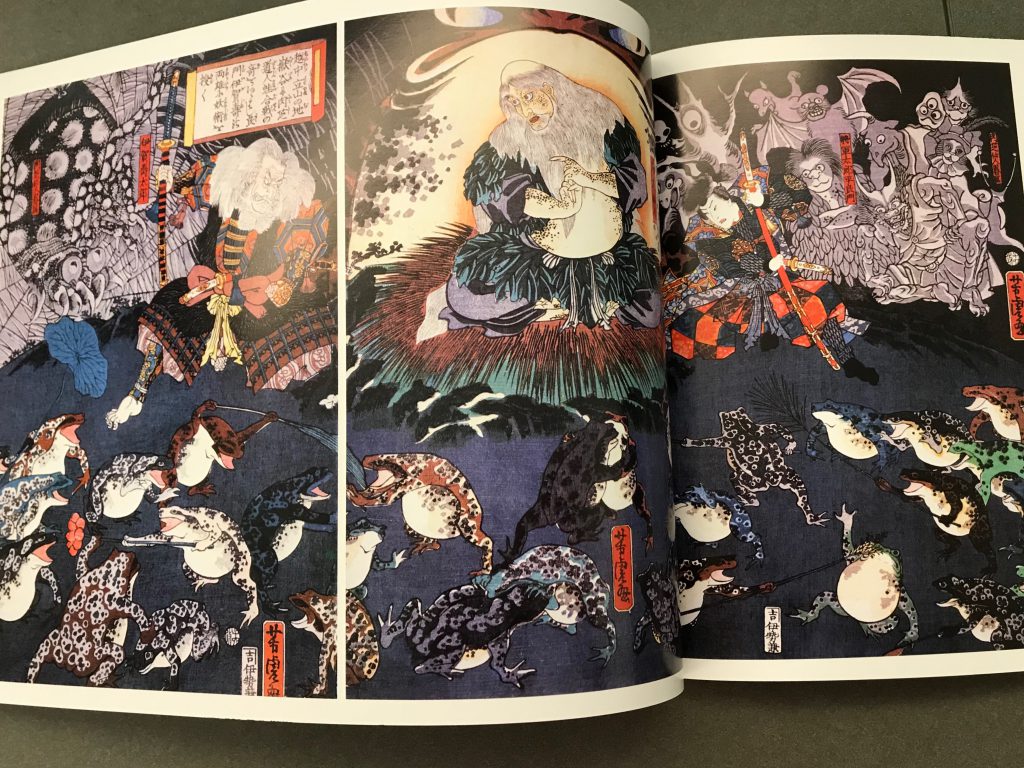Japanese Studies invites you to learn about the mythology and artistic culture of Meiji Japan (1868-1912) through the newly acquired Kyōsai Hyakki Gadan (暁斎百鬼画談), a color woodblock print by eccentric painter and manga forerunner, Kawanabe Kyōsai (河鍋 暁斎, 1831-1889). The long, accordion book (orihon) depicts a parade of all manner of weird and wicked yōkai (妖怪), spirits and demons from Japanese mythology. This particular scene is evocative of the hyakki yagyō (百鬼夜行) idiom, a historic theme in Japanese visual representation wherein a procession of legendary creatures sets foot upon the communities of mortal men and women.
For more information about this new acquisition, please check out the full article on our Manga Blog at OSU Libraries, available here: https://library.osu.edu/site/manga/2019/10/02/night-parade-of-one-hundred-demons-kyosais-hyakki-gadan-now-at-osu-libraries/





